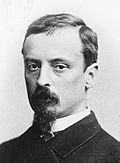Polish literature

Almost no Polish literature remains before Christianisation in the 10th century. Polish literature was written in the Latin language during the Middle Ages (there are only several Polish language texts from that times).
The Polish language was accepted as equal to Latin after the Renaissance for literature.
Jan Kochanowski was a leading poet of European Renaissance literature in the 16th century.
Polish writers were inspired by Western European literature but they had their own ideas and trends too. Those trends were coming to Poland because of noble people's travells and political contacts but they were becoming popular some time later then in other countries.
Polish Baroque literature had to trends: elitary one (Jan Andrzej Morsztyn, Maciej Kazimierz Sarbiewski, Daniel Naborowski) and the other one, created by usual nobles (Jan Chryzostom Pasek).
In times of Enlightenment Polish literature was influenced by France. Poland-Lithuania was very weak country and needed political changes. Literature was mainly about society and state, not about love or religion.
In 19th century Poland was not independent. From 1822 to 1863 there was Romanticism in Polish literature. Romantic poets include Adam Mickiewicz who wrote Pan Tadeusz epic in 1834, Juliusz Słowacki and Zygmunt Krasiński.
After failed anti-Russian uprising in 1863 Romanticism ended in Poland.
Several Polish novelists have won the Nobel prize. Henryk Sienkiewicz won in 1905. He wrote dramatized versions of famous events in Polish history. Władysław Reymont won a Nobel prize in 1924. He wrote the novel Chłopi.
Stanisław Lem is famous science fiction author in the modern era. His Solaris novel was made twice into a feature film.
